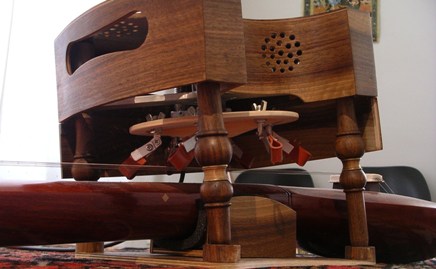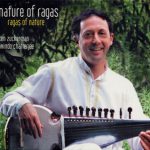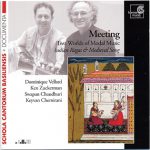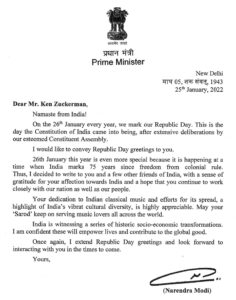The Sarod
The representation of the Sarod type of veena has been found among the 1st Century carvings of the Champa Temples (Madhya Pradesh) India. Also the archeological remains of Rupar (2000 B.C.) and sculptural representations of Gandhara (6th Century B.C.) show instruments which resemble the Sarod, having 3 or 4 strings. However, apart from these early depictions, it is almost impossible to trace the precise evolution of the sarod over the course of many centuries. Still, it is generally agreed to that the sarod – in its present form – is at least 100 years old. During this time, many important changes in the instruments features were made by Ustad Ali Akbar Khan’s father, the late Padmabibhushan Dr. Allauddin Khan. The body of a sarod is of teak or mahogany, the belly is covered with goat skin and the unfretted finger board is metal. The latter feature allows the playing of meend (glissando) and the subtle gamak (shakes) which typify sarod playing. The instrument has twenty five metal strings, ten of which are played with a plectrum made from a coconut shell. Four strings carry the melody, three are tuned to the tonic and serve to accentuate the rhythm, and three others are tuned to the dominant notes of the chosen raga. The remaining fifteen are sympathetic strings, which resonate when the corresponding notes on the main strings are played. A metal gourd increases the resonance as well as to help keep the proper balance of the instrument.
The Tanpura
The tanpura is the essential drone instrument in all forms of classical North Indian Music. It has between four and six strings and is found in a wide range of sizes. The function of the tanpura is to sound the tonic repeatedly throughout a performance so that both the performer and the listener are always aware of the basic notes of the raga.
Tabla
The Tabla is the most popular drum of North India, and is in fact a set of two drums. The right hand drum (tabla) is tuned to the tonic of the solo instrumentalist or vocalist; the left hand (banya) acts as the bass and is capable of many tones, which can be varied by the pressure from the base of the left palm. Between the straps and the drum bodies are pieces of wood by which the tension can be altered with the aid of a tuning hammer. It is possible to produce a great variety of sounds from these drums, and every possible sound is represented in a vocabulary known as bols, by which expert tabla players are able to recite any composition that can be played.
Inventions & innovations for Indian instruments
In recent years Ken Zuckerman has made significant contributions to the development of India’s traditional instruments through various innovations and inventions.
The innovations include
- The integration of precision geared tuners into the traditional pegs of the sarod and tanpura
- Wooden resonators, which have increased the volume and tonal quality of the sarod
- A sarod bridge add-on which allows for micro adjustments of the bridge placement
- His recent invention, Shanti, is the world’s first mechanical device which automatically plays an acoustic tanpura, giving both musicians and audiences the pure acoustic sound of the tanpura in both practice and performance settings.
1. Geared tuners
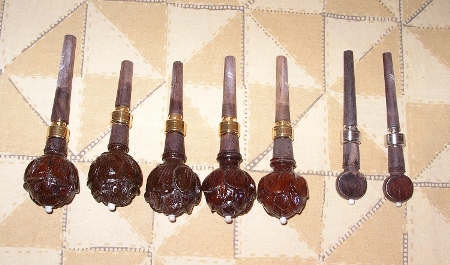
Planetary gears (4:1 ratio), implanted into the traditional sarod pegs
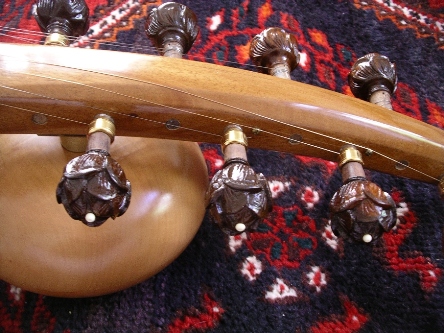
Finished pegs inserted into sarod. Special thanks to Daniel Bradley for finding a way to implant these planetary banjo tuners into the traditional sarod pegs and turn this idea into an elegant and superior tuning system!
2. Wooden resonators for the sarod
These resonators, made in different sizes and with a variety of woods, increase the volume and improve the tonal quality of the sarod.

Resonators made from a mixture of Alaskan Yellow Cedar, Pear and Rosewood. Thanks to Markus Schori and Rolf Joray for their contributions during the development and fabrication of these resonators.
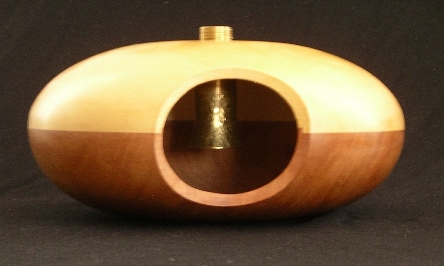
This oversize resonator not only combines the unique sound qualities of 3 woods, but also has a brass horn inside to capture the higher frequencies. It increases the volume, bass, mid-range and high frequencies of the sarod! Special thanks to Rolf Joray for his untiring work during the fabrication and fine-tuning this resonator.
3. Sarod bridge micro-adjuster
The exact placement of the sarod bridge is critical to the sound of the instrument. Not only does a slight change in position influence the sound, but changes in temperature and humidity require additional changes in the positioning in order to achieve the optimum tone and clarity. I thought of several possible systems to simplify what had always been a cumbersome process of changing the position of the bridge, but it was Daniel Bradley who came up with the simplest and most effective solution.
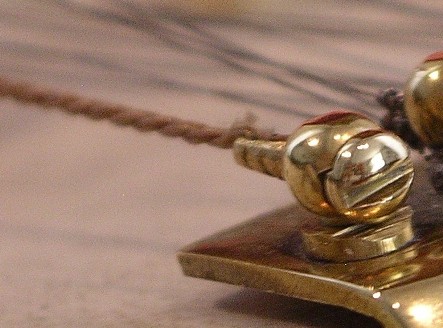
Here is a close-up of the tiny screw which has been inserted into a hole drilled into the end pin of the sarod bridge. It is attached to the thread which holds the bridge in place.
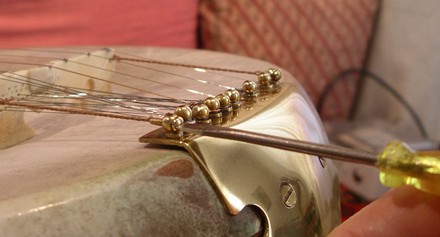
Micro bridge adjuster – By using a screw driver, one can easily move the sarod bridge by either tightening (increasing the knots in the connecting thread), or loosening. A beveled point of contact between the screw and the post insures that it holds its position, and also makes it easy to make precise changes in the bridge placement. It works like a charm!
4 Shanti, the world’s first mechanical device
Shanti, the world’s first mechanical device which automatically plays an acoustic tanpura, giving both musicians and audiences the pure acoustic sound of the tanpura in both practice and performance settings.
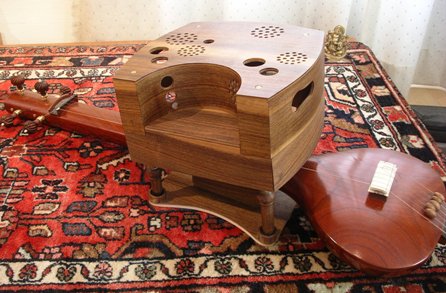
Check out “Shanti” on youtube!
India’s venerable Tanpura – now with a great new twist!
The soothing sound of the Tanpura, India’s ancient stringed accompaniment instrument, provides a rich carpet of sound on which the musicians recreate the age old tradition of ragas and talas. In recent times many musicians have switched to electronic digital drone devices, which attempt to imitate the sound of a real tanpura. Although these devices are compact, convenient and do not require someone to play them, the sound they produce does not measure up to the real tanpura. But now there is an alternative: Shanti, the Automatic Acoustic Tanpura Player.
Now you can have the real sound of the Tanpura whenever and wherever you want.
Designed and manufactured in Switzerland by Ken Zuckerman and a team of european craftsmen. Protected by international patent laws. 2012 Patent Pending #61473718.
